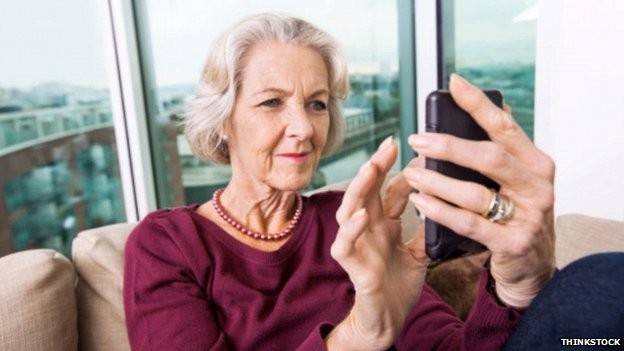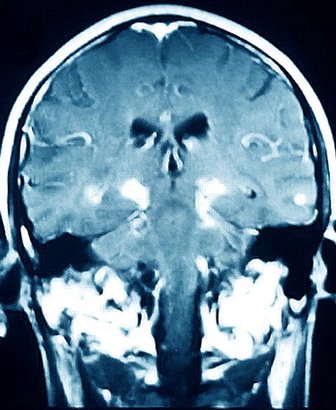ScienceRocks
Democrat all the way!
- Thread starter
- Banned
- #721
'Pocket' diagnosis for Parkinson’s
9 September 2014 ~ Smartphone technology revealed at the British Science Festival could help diagnose and treat Parkinson's disease.
Symptoms of Parkinson's are currently difficult to measure objectively after the patient leaves the doctor's clinic. New smartphone software developed at Aston University will bring the doctor into the patient's pocket to assess their movements and speech at home. Trials are now recruiting online, seeking people with and without the disease. Parkinson's is one of the commonest neurodegenerative diseases, affecting around 127,000 people in the UK.

Diagnosis is based on symptoms including tremor, stiffness and difficulty with movements and speech. However studies have shown that up to 20% of people diagnosed with Parkinson's show no evidence of the disease in post-mortem examinations. "Most people who have the disease will never be objectively measured," explained Dr Max Little, a mathematical researcher with Aston's Nonlinearity and Complexity Research Group. Dr Little's team has developed software that uses the microphone and motion detector of a standard smartphone to provide data to supplement traditional clinical assessment.
Machine learning
Voice change can be an early indicator of Parkinson's. Patients or their family may notice their voice becoming quieter, drifting in pitch and showing vocal tremors. Over the past eight years, Dr Little and colleagues have been developing tools to capture and quantify these changes in the lab and in the home. Using machine learning they are now able to "very accurately separate those who have Parkinson's from those who don't" - with up to 99% agreement with the diagnosis made by the neurologist in clinic. Their most recent study, the Parkinson's Voice Initiative, included 17,000 participants providing voice samples via telephone. Smartphones use accelerometers to measure force in three dimensions. These sensors can be used to collect data on Parkinson's with the phone stowed in the pocket - detecting "freezing of gait" when walking and other characteristic signs of the disease. By integrating this with GPS and other smartphone data, Dr Little's software can perform complex analyses of behaviours including "how many phone calls you make, what's your socialisation behaviour, are you spending a lot of time outside of the house, are you predominantly sitting or walking, how much do you explore your environment" - all of which can contribute to a diagnostic algorithm for Parkinson's.

Parkinson's is one of the commonest neuro-degenerative diseases
Personal diagnostic software raises new issues for diseases like Parkinson's which currently lack disease-modifying treatments. "For the first time, we could do population screening for Parkinson's," explained Dr Michele Hu, consultant neurologist at the Oxford Parkinson's Disease Centre. "But preclinical testing is a massive ethical can of worms - the issues must be carefully pre-empted and thought out. We don't know yet how accurate this could be as a predictor and the only way we will know is by very carefully following at-risk individuals over time." "The ethics clearly has to be worked out - what are we going to use these tools for? What would you like to know? What would you not like to know?" asked Dr Little. "We have made this tool and it's up to the community to decide what to do with it."
Ongoing trials
9 September 2014 ~ Smartphone technology revealed at the British Science Festival could help diagnose and treat Parkinson's disease.
Symptoms of Parkinson's are currently difficult to measure objectively after the patient leaves the doctor's clinic. New smartphone software developed at Aston University will bring the doctor into the patient's pocket to assess their movements and speech at home. Trials are now recruiting online, seeking people with and without the disease. Parkinson's is one of the commonest neurodegenerative diseases, affecting around 127,000 people in the UK.

Diagnosis is based on symptoms including tremor, stiffness and difficulty with movements and speech. However studies have shown that up to 20% of people diagnosed with Parkinson's show no evidence of the disease in post-mortem examinations. "Most people who have the disease will never be objectively measured," explained Dr Max Little, a mathematical researcher with Aston's Nonlinearity and Complexity Research Group. Dr Little's team has developed software that uses the microphone and motion detector of a standard smartphone to provide data to supplement traditional clinical assessment.
Machine learning
Voice change can be an early indicator of Parkinson's. Patients or their family may notice their voice becoming quieter, drifting in pitch and showing vocal tremors. Over the past eight years, Dr Little and colleagues have been developing tools to capture and quantify these changes in the lab and in the home. Using machine learning they are now able to "very accurately separate those who have Parkinson's from those who don't" - with up to 99% agreement with the diagnosis made by the neurologist in clinic. Their most recent study, the Parkinson's Voice Initiative, included 17,000 participants providing voice samples via telephone. Smartphones use accelerometers to measure force in three dimensions. These sensors can be used to collect data on Parkinson's with the phone stowed in the pocket - detecting "freezing of gait" when walking and other characteristic signs of the disease. By integrating this with GPS and other smartphone data, Dr Little's software can perform complex analyses of behaviours including "how many phone calls you make, what's your socialisation behaviour, are you spending a lot of time outside of the house, are you predominantly sitting or walking, how much do you explore your environment" - all of which can contribute to a diagnostic algorithm for Parkinson's.

Parkinson's is one of the commonest neuro-degenerative diseases
Personal diagnostic software raises new issues for diseases like Parkinson's which currently lack disease-modifying treatments. "For the first time, we could do population screening for Parkinson's," explained Dr Michele Hu, consultant neurologist at the Oxford Parkinson's Disease Centre. "But preclinical testing is a massive ethical can of worms - the issues must be carefully pre-empted and thought out. We don't know yet how accurate this could be as a predictor and the only way we will know is by very carefully following at-risk individuals over time." "The ethics clearly has to be worked out - what are we going to use these tools for? What would you like to know? What would you not like to know?" asked Dr Little. "We have made this tool and it's up to the community to decide what to do with it."
Ongoing trials


